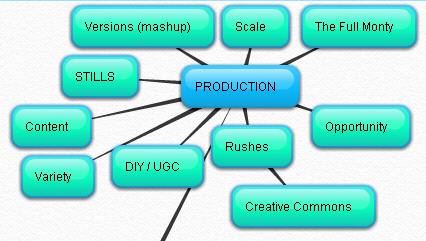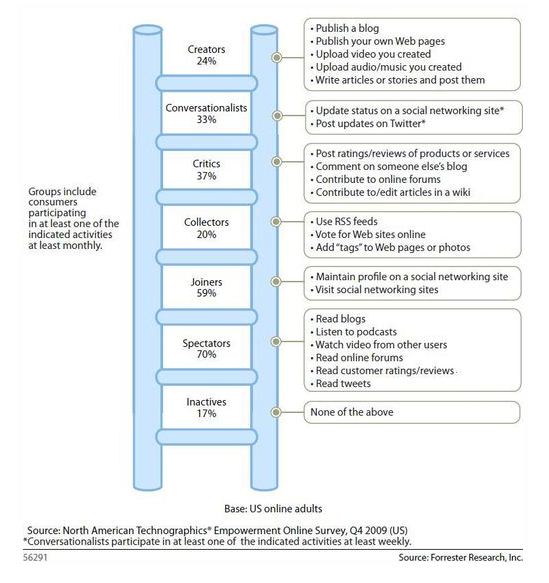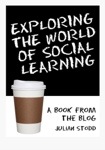
What role does video play in elearning? What role does AV or video play in digital communications?
A simple question shared on Linkedin and picked up by a West End Production company led to my joining four producers for what became a two hour conversation yesterday. I based this conversation around a mindmap created in Bubbl.us, something a fellow MAODE student introduced me to over a year ago. (We were comparing tools, such as Compendium, for creating visualisations of learning designs).

I had thought about dripping ink into a glass of water to make a point: that digital content dripped into a digital ocean quickly dilutes, that binary code of text, images, video and sound can be melted down and mashed up in many ways. I wonder if an ice-cube in a G&T would have served the same purpose?
It is of course a metaphor, the suggestion that anything goes and anything can happen.
(I find these mind maps a far easier way to share ideas. It is non-linear. It is an aide-memoir. I'd put it online in Picasa and in a blog rather than printing off. I had expectations of calling it up on a huge boardroom screen, instead we struggled with a slow download in an edit suite. Sometimes only a print out would do. There wasn't an iPad amongst them either).
We discussed the terms 'e-learning' and even 'e-tivities' acknowledging that as digital activity is part of the new reality that online it is just 'learning' and that an 'activity' is best described as such.
Video online can be passive, like sitting back and watching a movie or TV. To become an activity requires engagement, sitting forward, and in most cases tapping away at a keyboard (though increasingly swiping across a touch screen).
'Sit Back' or 'Sit Forward' are phrases I recall from the era of 'web-based learning' a decade ago, even interactive learning on Laser Disc and DVD in the early 1990s.
There is science behind it, that learning requires engagement if stuff is to stick: watching a video, or a teacher/lecture is likely to be too passive for much to meaningful. The crudest activity is to take notes (and subsequently to write essays and be examined of course).
Here I am saying 'anything goes' that a piece of video used in learning may be short or long, with limited production values or 'the full monty', the kind of conference opener or commercial that are cinematic with production values and costs to match. We differentiated between 'User Generated Content' and 'DIY', between the amateur working alone and someone being guided through the craft skills of narrative story telling using video. I cited various examples and our our plans to bring alumni together over a weekend, to introduce TV production skills, hand out cameras and a sound kit (though some would bring their own), then based on responses to a creative brief, a synopsis and treatment, even a simple script, they would go away and shot then edit something. These pieces should have a credibility and authenticity as a result.
The kind of outputs include the video diary and the 'collective' montage with contributions from around the world linked with some device. A recording (with permission) of a web conference may meet the same criteria, embedded on a dashboard to allow for stop, stop, replay. A couple of other forms of 'user generated content' were mentioned, but neither taking notes nor recording the meeting I have forgotten. I use the negative expression 'corporate wedding video' for the clips that can be generated by teams who haven't had the training, or lack the craft skills.
For the presentation I had spun through a dozen video pieces and grabbed screens as I went along, key moments in the presentation or some trick or approach that I liked to illustrate a point: text on screen, humour, slip-ups denoting authenticity and so on. Put online and embedded in a blog these images were a form or mashup. The images could be collated on Flickr. Whilst a piece of video on YouTube can be embedded anywhere a person wants it, this content in various ways can be reincorporated. Not a bad thing if links of some kind are retained. Providing a transcript and stills are ways to facilitate quoting from the piece, for getting the conversation going on a social platform. This depends of course on the client brief, whether there is a wish, let alone permission, supported by the right Creative Commons choices, to see content shared.
We discussed external and interal communications, the difference between content for the Internet or an Intranet.
We also discussed the likelihood of people to participate in this way. I like the simple split between 'Digital Visitors' and 'Digital Residents', between those who look and those who touch, those who observe from time to time, compared to those who take an active role. I quoted Jakob Neilsen and his 95:4:1 ratios between those online who simple browse or observer (what used to be pejoratively called lurking), those who rate, like or comment and the 1% who create the content.
Forrester Research have taken this further though this isn't something I took them through:
- Creator
- Conversationalist
- Critic
- Collector
- Joiner
- Spectator
- Inactive

REFERENCE
Salmon, G (2002) The key to active learning online. (accessed 24th March 2012) https://tojde.anadolu.edu.tr/tojde8/reviews/etivities.htm

